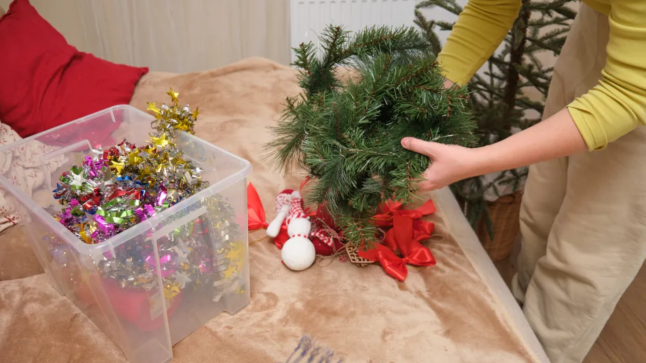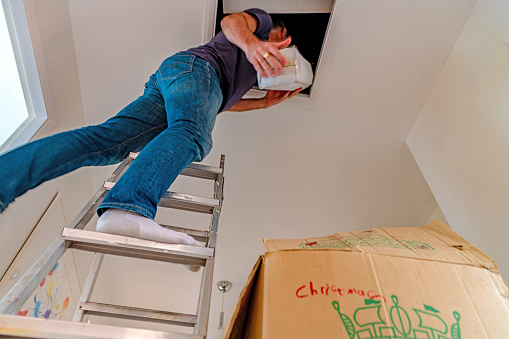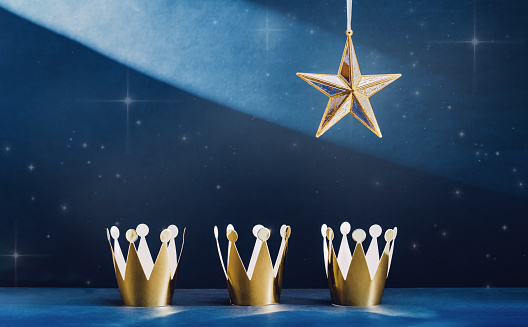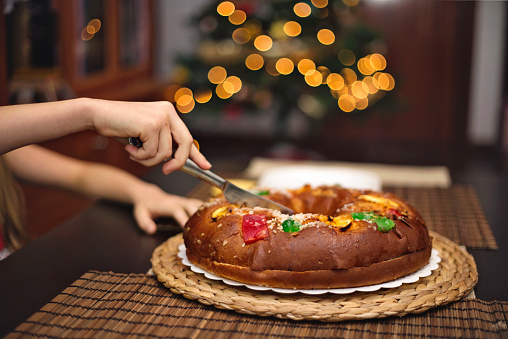
There are two types of people: those who take down their Christmas decorations straight away and those who leave them up for months on end.
But if you’re in two minds, there is actually a centuries long tradition that dictates when you should officially un-deck those halls.
It’s pretty simple: you should take down your tree 12 days after Christmas.
While for some this may simply be an easy schedule to follow, for Christians it’s about recognising the festival of Twelfth Night, followed by Epiphany.
When is Twelfth Night?
The 12 days of Christmas began on December 25, so Christmas Day.
Twelfth Night occurs on the twelfth and final night of the 12 days of Christmas – which is tomorrow, January 5.
Epiphany takes place the day after on January 6, while Candlemas – another traditional feast day marking when Jesus was presented at the Temple of Jerusalem – isn’t until February 2.

What is Twelfth Night?
Twelfth Night is a Christian celebration that marks the end of the 12 days of Christmas and the start of Epiphany.
Epiphany is recognised as the day that the Three Wise Men, or the Magi, visited the baby Jesus, and is considered by Christians to be the end of the Christmas season.
What is the history of Twelfth Night?
Twelfth Night has been a feature of Christmas celebrations for centuries, dating as far back as 597AD.
During the early Middle Ages, the Roman Catholic Council of Tours (a city in France) marked on this year that Christmas and the 12 days following, up to Epiphany, should be filled with celebration.
The nearly two-week period was filled with feasts and festivities in medieval and Tudor England, which ended in 1603.

All 12 days were important, and the lengthy celebrations continued until around the late 1800s, it is thought – as they were said to be removed from the calendar by Queen Victoria.
This may be the origin of decorations coming down on Twelfth Night – and it’s now considered unlucky beyond then.
Apparently, the Victorians wanted people to be back at work by this date.
However, the Tudors typically kept their Christmas decorations up until Candlemas.
How is Twelfth Night celebrated today?
Today, while less common, Twelfth Night traditions revolve around food and drink as some may enjoy a Twelfth Night Feast.
This celebration often includes a punch known as wassail and a bake called a King Cake.
Another Tudor tradition, this cake would have had a bean baked into it, and whoever found the bean in their slice would get to be ‘king for a day’.
According to English Heritage, the cake ‘was leavened with yeast, rather like a fruit-laden brioche’ and from the late 18th-century onwards would be ‘elaborately decorated’ with sugar and almond pastes.
In fact, if you’re an actor performing at London’s Drury Lane Theatre on Twelfth Night, you will receive a slice of this cake, along with some rum.

When actor Robert Baddeley died in 1794, his Will stated that the cake and punch should be enjoyed by whatever company was working at the theatre on January 6. The first Baddeley Cake was first served in 1795, and has been offered up every year since.
More Trending
Other Twelfth Night traditions include singing carols, and writing a message above your front door in chalk to bless your home.
The most common tradition of all, however, is the belief that it’s bad luck to leave your Christmas decorations up after Twelfth Night, so many will take them down on this day.
This article was first published on 2 January 2024
Do you have a story to share?
Get in touch by emailing MetroLifestyleTeam@Metro.co.uk.
MORE: Pop culture predictions for 2025 – from the new James Bond to Oasis bust-up
MORE: Asda announces major price drop on 2,560 products this January













